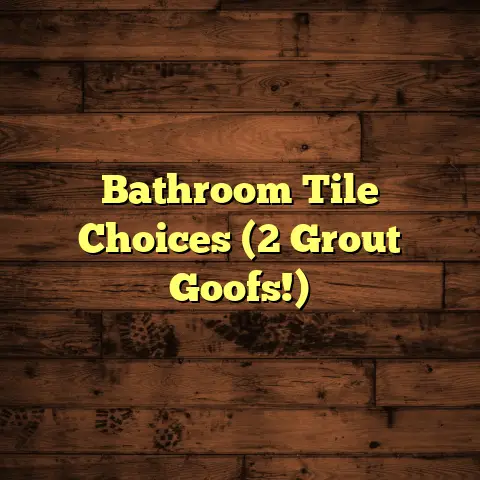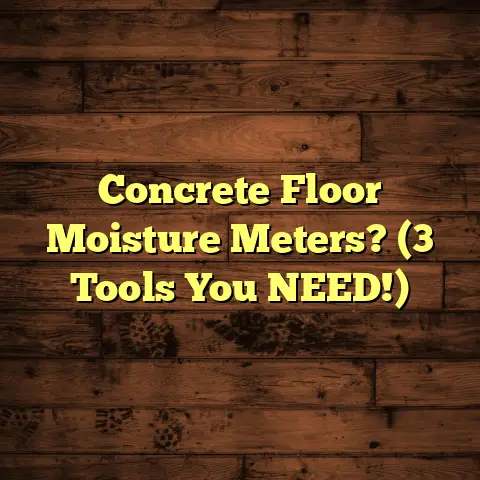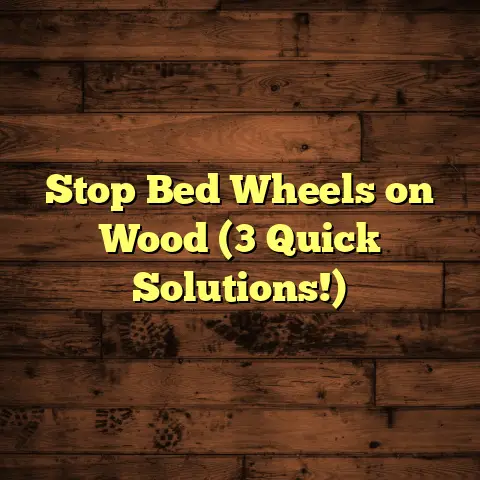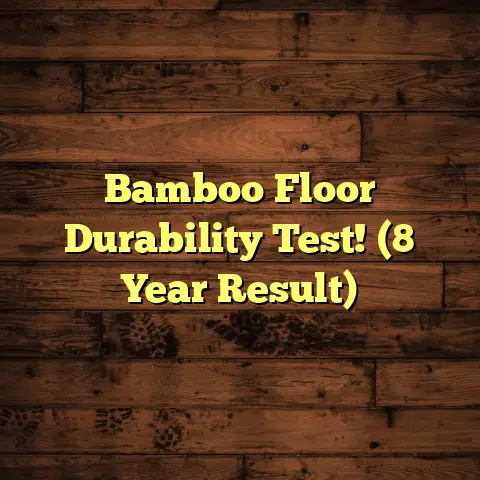How To Clean A Dirty Vinyl Floor?
A Comprehensive Guide
Imagine this: You’ve just thrown an amazing party. The music, the food, the company—everything was perfect.But then you look down. Oh no! Your vinyl floor has seen better days. Spills, scuffs, maybe even a rogue muddy paw print.
What if I told you that you could bring back that sparkle? That with a few simple steps, you can transform that dirty vinyl floor back to its former glory?
That’s what we’re going to dive into today. I’m going to share my years of experience as a flooring contractor to help you tackle even the toughest vinyl floor cleaning challenges.
Let’s get started!
Section 1: Understanding Vinyl Flooring
1.1 What is Vinyl Flooring?
So, what exactly is vinyl flooring? Basically, it’s a synthetic flooring option made from polyvinyl chloride (PVC) and other compounds.
Think of it as a tough, resilient surface designed to withstand a lot of wear and tear.
You’ll typically find it in three main forms:
-
Sheet Vinyl: Comes in large rolls, offering a seamless look.
-
Vinyl Tile: Individual tiles, often square, that are glued down.
-
Vinyl Plank: Long, narrow pieces that mimic hardwood.
Vinyl’s popularity is no accident. It’s durable, cost-effective, and comes in a huge range of styles. It’s a great option if you want the look of wood or tile without the hefty price tag or high maintenance.
1.2 Common Issues with Vinyl Floors
Now, even though vinyl is tough, it’s not invincible. I’ve seen it all in my years as a flooring contractor!
Here are some common problems I encounter:
-
Dirt Accumulation: This is the big one. Dirt, dust, and grime build up over time, dulling the floor’s shine.
-
Stains: Spills happen! Food, drinks, even pet accidents can leave unsightly marks.
-
Scratches: Furniture being dragged, kids playing – scratches are almost inevitable.
-
Scuff Marks: Shoes, especially those with rubber soles, can leave scuff marks that are surprisingly stubborn.
Neglecting regular cleaning can lead to long-term damage. Dirt and grime act like sandpaper, slowly wearing down the protective layer on your vinyl. Stains can become permanent if left untreated.
Trust me, a little regular cleaning goes a long way in preserving your vinyl floor!
Section 2: Preparing for the Cleaning Process
2.1 Gather Your Supplies
Alright, let’s get down to business. Before you start scrubbing, you need to gather your arsenal of cleaning supplies.
Here’s what I recommend:
-
Broom: For sweeping up loose dirt and debris.
-
Vacuum Cleaner: A vacuum with a soft brush attachment is great for more thorough dirt removal. (Avoid using the beater bar, as it can scratch vinyl.)
-
Mop: A microfiber mop is ideal for vinyl floors. It’s gentle and effective.
-
Microfiber Cloths: These are your best friends for spot cleaning and wiping up spills.
Now, let’s talk cleaning solutions. You have a couple of options:
-
Commercial Vinyl Floor Cleaners: These are specifically formulated for vinyl and are readily available at most stores. I often use and recommend Armstrong Once ‘n Done.
-
Homemade Alternatives: If you’re on a budget or prefer a more natural approach, here are a few DIY options:
-
Vinegar and Water: Mix 1/2 cup of white vinegar with 1 gallon of warm water. Vinegar is a great natural cleaner and deodorizer.
-
Dish Soap and Water: A few drops of mild dish soap in a gallon of warm water can also work well.
-
Baking Soda Paste: For tough stains, make a paste of baking soda and water.
-
2.2 Assess the Floor Condition
Before you dive in headfirst, take a good look at your floor. What are you dealing with?
-
Surface-Level Cleaning: If it’s just general dirt and dust, a quick sweep and mop might be all you need.
-
Deep Cleaning: If you have stubborn stains, scuff marks, or a lot of built-up grime, you’ll need to pull out the big guns.
Identify any specific stains and the type of dirt you’re dealing with.
-
Grease: Kitchen spills are often greasy.
-
Food: Sauces, crumbs, and other food messes.
-
Pet Messes: Accidents happen!
Knowing what you’re up against will help you choose the right cleaning solutions and techniques.
Section 3: Step-by-Step Cleaning Process
Okay, time to get your hands dirty (well, not too dirty!). Here’s my step-by-step guide to cleaning a vinyl floor:
3.1 Sweeping and Vacuuming
First things first, you need to remove all the loose dirt and debris. This is crucial because you don’t want to be pushing dirt around while you’re mopping, which can scratch the floor.
Use a broom to sweep the entire floor, paying attention to corners and edges.
Then, follow up with a vacuum cleaner with a soft brush attachment. This will pick up any remaining dirt and dust.
Pro Tip: Avoid using a vacuum with a beater bar directly on vinyl. The rotating brush can scratch the surface.
3.2 Spot Cleaning Stains
Now, let’s tackle those pesky stains. Remember, the sooner you address a stain, the easier it will be to remove.
Here’s how to handle some common types of stains:
-
Grease Stains:
- Mix a few drops of dish soap with warm water.
- Apply the solution to the stain and let it sit for a few minutes.
- Gently scrub with a soft cloth or sponge.
- Rinse with clean water and dry thoroughly.
-
Food Stains:
- Mix equal parts of white vinegar and water.
- Apply the solution to the stain and let it sit for a few minutes.
- Wipe with a clean cloth.
- Rinse with clean water and dry thoroughly.
-
Ink or Dye Stains:
- Dab the stain with rubbing alcohol.
- Blot with a clean cloth.
- Repeat until the stain is gone.
- Rinse with clean water and dry thoroughly.
-
For stubborn stains:
- Make a paste of baking soda and water.
- Apply the paste to the stain and let it sit for 15-20 minutes.
- Gently scrub with a soft brush or cloth.
- Rinse with clean water and dry thoroughly.
3.3 Mopping the Floor
Alright, now for the main event: mopping! This is where you’ll really bring back the shine.
-
Choose Your Cleaning Solution: Select either a commercial vinyl floor cleaner or one of the DIY options I mentioned earlier (vinegar and water or dish soap and water).
-
Prepare Your Mop: Dampen your microfiber mop with the cleaning solution. Make sure the mop is damp, not soaking wet. Excess water can seep into the seams of your vinyl and cause damage.
-
Mop in Sections: Mop the floor in sections, overlapping each stroke slightly. This will ensure that you cover the entire surface.
-
Rinse and Wring: Rinse the mop frequently in clean water and wring it out thoroughly. This will prevent you from spreading dirty water around.
-
Dry the Floor: After mopping, dry the floor with a clean, dry microfiber cloth. This will help prevent water spots and streaks.
Important: Never use abrasive cleaners, scouring pads, or steel wool on vinyl floors. These can scratch the surface and damage the finish.
3.4 Dealing with Scuff Marks
Scuff marks can be a real eyesore, but don’t worry, they’re usually easy to remove. Here are a few methods I’ve used:
-
Tennis Ball: This is my go-to trick! Simply rub a clean tennis ball over the scuff mark. The fuzz on the ball will gently buff away the mark.
-
Baking Soda Paste: Make a paste of baking soda and water. Apply the paste to the scuff mark and gently scrub with a soft cloth. Rinse with clean water and dry thoroughly.
-
Eraser: A regular pencil eraser can also work wonders on scuff marks. Just rub the eraser over the mark until it disappears.
3.5 Deep Cleaning Techniques
Sometimes, a regular mopping just isn’t enough. If your vinyl floor is really dirty or has a lot of built-up grime, you might need to do a deep cleaning.
Here are a couple of techniques I recommend:
-
Using a Steam Mop:
- Steam mops use hot steam to loosen dirt and grime.
- They’re great for deep cleaning vinyl floors, but be careful not to overuse them.
- Excessive steam can damage the floor over time.
- Always follow the manufacturer’s instructions for your steam mop.
- I recommend brands like Bissell or Shark.
-
Scrubbing with a Soft Brush:
- For tough stains or areas with a lot of built-up grime, you can try scrubbing with a soft brush.
- Use a mild cleaning solution (like dish soap and water) and gently scrub the affected areas.
- Rinse with clean water and dry thoroughly.
Section 4: Maintenance Tips for Vinyl Floors
Okay, you’ve got your vinyl floor sparkling clean. Now, how do you keep it that way? Here are some maintenance tips I always share with my clients:
4.1 Regular Cleaning Schedule
Consistency is key! Establishing a regular cleaning schedule will prevent dirt and grime from building up in the first place.
Here’s what I recommend:
-
Daily: Sweep or vacuum high-traffic areas to remove loose dirt and debris.
-
Weekly: Mop the entire floor with a mild cleaning solution.
-
Monthly: Do a deep cleaning to remove any built-up grime or stains.
4.2 Protective Measures
Prevention is always better than cure! Here are some simple things you can do to protect your vinyl floor:
-
Use Mats and Rugs: Place mats at entrances to trap dirt and moisture. Use rugs in high-traffic areas to protect the floor from wear and tear.
-
Use Furniture Pads: Attach felt pads to the legs of your furniture to prevent scratches.
-
Avoid Harsh Chemicals: Never use abrasive cleaners, scouring pads, or steel wool on vinyl floors.
-
Clean Spills Immediately: Wipe up spills as soon as they happen to prevent staining.
Section 5: Troubleshooting Common Problems
Even with the best cleaning and maintenance routine, you might encounter some problems. Here’s how to troubleshoot some common issues:
5.1 Persistent Stains
Sometimes, stains just won’t budge. If you’ve tried everything and the stain is still there, here are a few more things you can try:
-
Hydrogen Peroxide: Apply a small amount of hydrogen peroxide to the stain and let it sit for a few minutes. Blot with a clean cloth. Rinse with clean water and dry thoroughly. (Test in an inconspicuous area first to make sure it doesn’t discolor the floor.)
-
Mineral Spirits: For really stubborn stains, you can try using mineral spirits. Apply a small amount to a clean cloth and gently rub the stain. Rinse with clean water and dry thoroughly. (Use with caution and always wear gloves and eye protection.)
5.2 Worn or Dull Finish
Over time, the finish on your vinyl floor can become worn or dull. Here’s how to restore the shine:
-
Vinyl Floor Polish: Apply a vinyl floor polish according to the manufacturer’s instructions. This will add a protective layer and restore the shine. I recommend Weiman Vinyl Floor Polish and Restorer.
-
Floor Finish: For a more durable finish, you can apply a vinyl floor finish. This will provide a long-lasting shine and protect the floor from wear and tear.
5.3 Repairing Scratches and Damage
Minor scratches can often be repaired with a vinyl floor repair kit or a color-matched marker.
-
Vinyl Floor Repair Kit: These kits typically contain a filler that you can use to fill in the scratch. Follow the manufacturer’s instructions for application.
-
Color-Matched Marker: Use a marker that matches the color of your floor to conceal the scratch.
For more serious damage, you might need to replace the damaged section of flooring.
Conclusion: Bringing It All Together
So there you have it! A comprehensive guide to cleaning a dirty vinyl floor.
I hope this article has given you the confidence and knowledge you need to tackle even the toughest cleaning challenges.
Remember, regular maintenance is key to keeping your vinyl floor looking its best. A little bit of effort can go a long way in preserving your floor and keeping it sparkling clean.
And let’s be honest, there’s nothing quite like the satisfaction of a clean and shiny floor. It’s a reflection of your home care and a welcoming sight for you and your guests.
So, embrace the process of cleaning, experiment with different techniques, and find what works best for you.
With the right tools, techniques, and a little bit of elbow grease, you can transform your dirty vinyl floor into a shining reflection of your home.
Happy cleaning!





